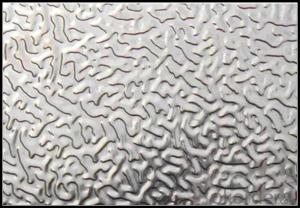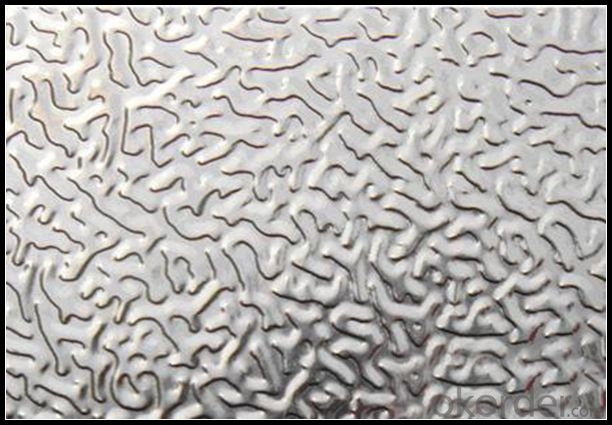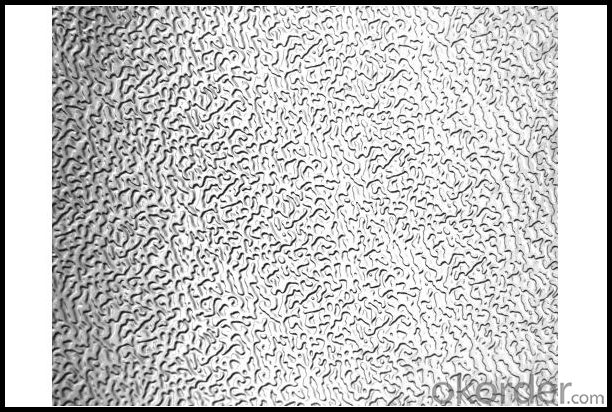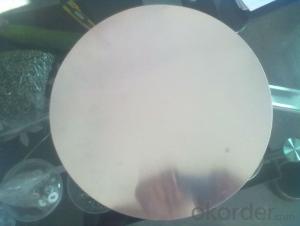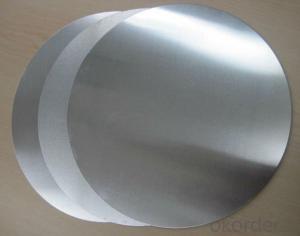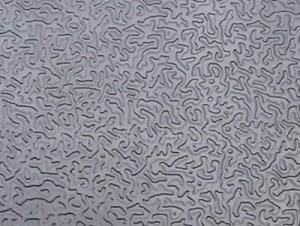Aluminum Prime Quality Aluminium Stucco Treadplate
- Loading Port:
- Shanghai
- Payment Terms:
- TT OR LC
- Min Order Qty:
- 5 m.t.
- Supply Capability:
- 1000 m.t./month
OKorder Service Pledge
OKorder Financial Service
You Might Also Like
Specification
1. Structure of Aluminium Stucco Treadplate With Prime Quality Description
Aluminium Stucco Treadplate With Prime Quality is one semi-finished aluminium material. The alloy AA5383 is widly used in building, industry ect. Its weight is much lower than steel. So many customers choosed aluminium material instead of steel.
2. Specification of Aluminium Stucco Treadplate With Prime Quality
Aluminium Stucco Treadplate With Prime Quality | |
Main Specification | |
Alloy | AA1xxx (AA1050, AA1060, AA1070, AA1100 etc.) |
AA3xxx (AA3003, AA3004, AA3005, AA3105 etc.) | |
AA5xxx, AA6XXX (AA5052,AA5083, AA5754, AA6061, AA6062 etc.) | |
AA8xxx(AA8011, AA8006 etc.) | |
Temper | H14,H16, H18, H22, H24, H26, H32,O/F, T4, T6, T651 |
Thickmess | 0.01mm-100mm |
Width | 30mm-1700mm |
Standard | GB/T 3880-2006/ASTM |
Special specification is available on customer's requirement | |
3. Application of Aluminium Stucco Treadplate With Prime Quality
(1).Interior: wall cladding, ceilings, bathrooms, kitchens and balconies, shutters, doors...
(2).Exterior: wall cladding, facades, roofing, canopies, tunnels,column covers , renovations...
(3).Advertisement: display platforms, signboards, fascia, shop fronts...
4. Feature of Aluminium Stucco Treadplate With Prime Quality
Surfact Quality :
Be free from Oil Stain, Dent, Inclusion, Scratches, Stain, Oxide Dicoloration, Breaks, Corrosion, Roll Marks, Dirt Streaks and other defect which will interfere with use,
Mechenical Property:
Chemical Composite and Mechanical Property
5. Certificate of Aluminium Stucco Treadplate With Prime Quality
SGS and ROHS(if client request, paid by client), MTC(plant provided), Certificate of Origin(FORM A, FORM E, CO), Bureau Veritas and SGS (if client request, paid by client), CIQS certificate
6. Image of Aluminium Stucco Treadplate With Prime Quality
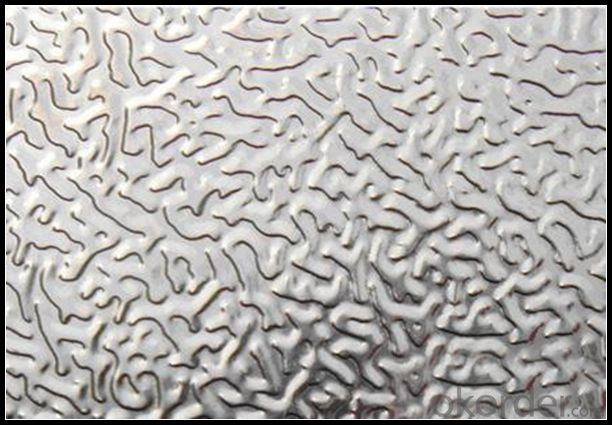

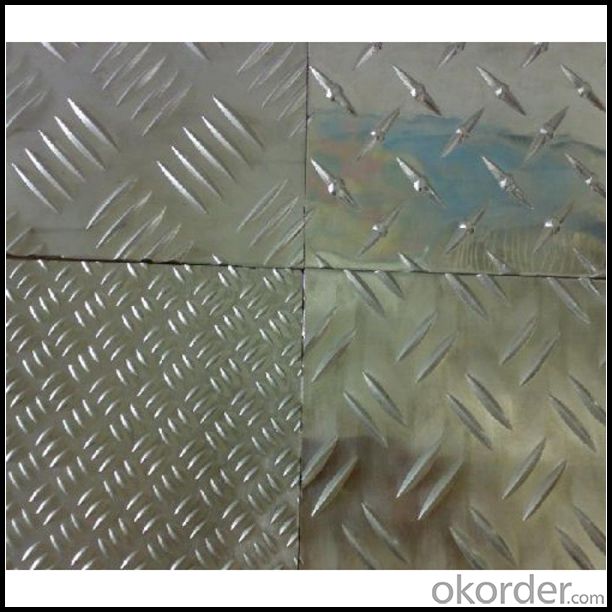
7. Package and shipping of Aluminium Stucco Treadplate With Prime Quality
First, plastic cloth with drying agent inside; Second, Pearl Wool ; Third, wooden cases with dry agent , fumigation wooden pallets, aluminum surface could cover blue PVC film
8. FAQ
1) What is the delivery time?
Depends on actual order, around 20 to 35 days
2) What is the QC system:
We have QC staff of 20 persons and advanced equipment, each production is with MTC traced from Aluminum ingot lot.
3) What market do you mainly sell to?
Australia, America, Asia, Middle East, Western Europe, Africa etc
- Q: This question asks for various methods that can be used to recycle aluminum.
- <p>Recycling aluminum can be done through several methods, including mechanical recycling, which involves melting and reprocessing aluminum without altering its chemical properties. This is the most common method due to its efficiency and cost-effectiveness. Another method is chemical recycling, where aluminum is treated with chemicals to break it down into its constituent elements, which can then be repurposed. Additionally, aluminum can be recycled through a process called hydrometallurgical recycling, which uses aqueous solutions to extract aluminum from waste. Finally, sorting and collection play a crucial role in ensuring that aluminum waste is directed to appropriate recycling facilities where these methods can be applied.</p>
- Q: This question asks about the methods to determine the safety of a specific brand's aluminum products.
- <p>To determine if a particular brand of aluminum products is safe to use, one should look for certifications and standards compliance. Check if the brand has certifications such as ISO 9001 for quality management systems or specific safety certifications relevant to aluminum products. Look for compliance with safety standards like ANSI, ASTM, or EN standards. Additionally, research customer reviews and testimonials, and consider third-party lab testing results. It's also important to inquire about the manufacturing process to ensure it adheres to environmental and health safety regulations. Lastly, consult with industry experts or regulatory bodies for their assessment of the brand's safety practices.</p>
- Q: Is it possible to utilize aluminum in the manufacturing of components for aerospace applications?
- <p>Yes, aluminum is widely used in the aerospace industry for making various components due to its high strength-to-weight ratio, corrosion resistance, and ease of fabrication. It is commonly used in aircraft structures, wings, fuselage, and engines. Aluminum alloys are preferred for their excellent fatigue resistance and ability to withstand high temperatures and stresses encountered in flight.</p>
- Q: Explain the differences between aluminum and other metals concerning their ability to degrade or break down in the environment.
- <p>Aluminum is not biodegradable in the traditional sense, meaning it does not break down into simpler substances through natural processes. It is highly resistant to corrosion and can persist in the environment for a long time. Unlike metals like iron, which rust and degrade over time, aluminum remains largely intact. However, aluminum can react with other elements in the environment, such as oxygen, to form a thin layer of aluminum oxide on its surface, which can alter its properties. Other metals like magnesium and zinc are more biodegradable as they can corrode and break down more readily in certain conditions, contributing to their use in biodegradable materials.</p>
- Q: Is it possible to utilize aluminum in the construction or components of electronic devices?
- <p>Yes, aluminum is commonly used in electronic devices. It is valued for its lightweight, high thermal conductivity, and corrosion resistance. Aluminum is often used in heat sinks to dissipate heat from electronic components, as well as in the casings of devices for structural support and durability. Additionally, aluminum is used in the manufacturing of electrolytic capacitors and serves as a conductive material in various electronic components due to its good electrical conductivity.</p>
- Q: This question asks for a list of typical flaws or imperfections that can occur in aluminum products.
- <p>Common defects in aluminum products include porosity, which refers to small holes or voids within the material; surface defects such as scratches, dents, and discoloration; mechanical defects like warping or deformation; and metallurgical defects such as inclusions or impurities. Additionally, aluminum products can suffer from corrosion, which can lead to pitting or general surface degradation, and stress corrosion cracking, which occurs under certain environmental conditions and stress. Each of these defects can impact the structural integrity, appearance, or performance of aluminum products.</p>
- Q: This question seeks to understand the safety standards that aluminum products must adhere to, ensuring they are safe for use and do not pose health or environmental risks.
- <p>Safety standards for aluminum products vary by region and application but generally focus on ensuring the products are safe for their intended use and do not pose health or environmental risks. Standards often cover material composition, manufacturing processes, and finished product testing. For example, the American Society for Testing and Materials (ASTM) and the International Organization for Standardization (ISO) provide standards for aluminum alloys and their applications. Additionally, the Food and Drug Administration (FDA) has specific guidelines for aluminum used in food contact materials to prevent contamination. Compliance with these standards is crucial for manufacturers to maintain product safety and consumer trust.</p>
- Q: Is it possible to utilize recycled plastic or paper for manufacturing new products instead of sourcing new materials?
- <p>Yes, recycled plastic and paper can be used to create new products, reducing the need for new materials. This process not only conserves natural resources but also decreases waste in landfills. Recycled paper can be used to make new paper products, packaging, and even some types of construction materials. Similarly, recycled plastics can be repurposed into various products such as clothing, furniture, and new plastic items. However, it's important to note that the quality of recycled materials may vary, and not all plastics or paper products can be recycled effectively. The recycling process also requires energy, so it's crucial to balance the environmental benefits with the energy costs and potential for contamination during recycling.</p>
- Q: This question asks about the general environmental impact of using aluminum.
- <p>The use of aluminum has both positive and negative environmental impacts. On the positive side, aluminum is lightweight and durable, which can reduce the energy needed for transportation. It is also recyclable, and recycling aluminum saves up to 95% of the energy required to produce new aluminum from raw materials. However, on the negative side, the production of aluminum is energy-intensive and generates significant greenhouse gas emissions. The process also produces toxic byproducts, such as fluorides, which can contaminate water and soil. Additionally, the mining of bauxite, the primary source of aluminum, can lead to deforestation and habitat destruction. Overall, while aluminum has its benefits, its production and use have substantial environmental consequences that need to be managed responsibly.</p>
- Q: Is it possible to utilize aluminum as a material for food containers?
- <p>Yes, aluminum is commonly used to make food containers due to its lightweight, durability, and good thermal conductivity. It's important to note that aluminum containers are often coated or lined with materials like plastic or enamel to prevent direct contact with food, as aluminum can react with acidic or alkaline foods and potentially leach into the food. Additionally, while aluminum is generally safe, there are concerns about its long-term health effects, so its use in food containers is regulated to ensure safety.</p>
Send your message to us
Aluminum Prime Quality Aluminium Stucco Treadplate
- Loading Port:
- Shanghai
- Payment Terms:
- TT OR LC
- Min Order Qty:
- 5 m.t.
- Supply Capability:
- 1000 m.t./month
OKorder Service Pledge
OKorder Financial Service
Similar products
Hot products
Hot Searches
